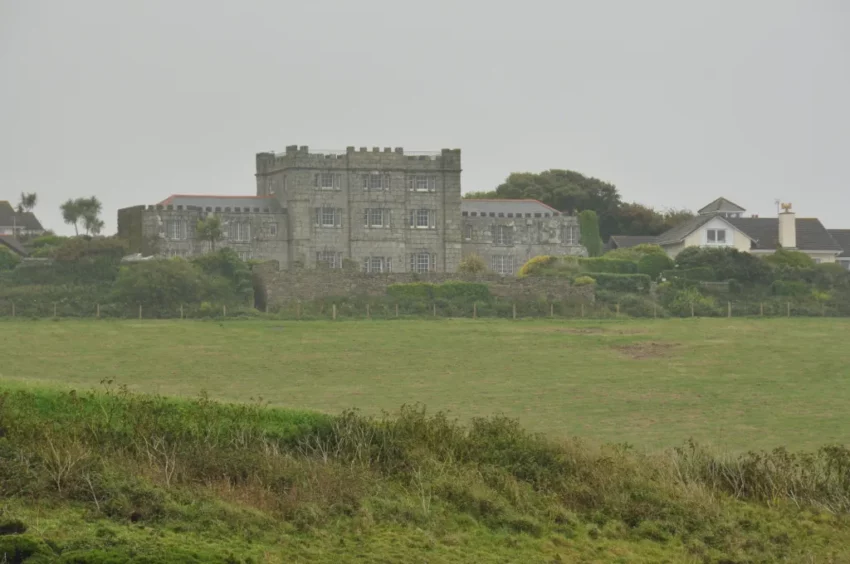The Historical Tapestry of Acton Castle
Acton Castle, a small castellated mansion near Perranuthnoe, Cornwall, stands as a testament to the rich history and architectural heritage of the region. Constructed around 1775 by John Stackhouse, a renowned botanist, the castle initially served as a research hub for marine algae. Stackhouse, inspired by the works of Theophrastus, chose this picturesque location to further his studies, particularly focusing on seaweed.
Get your dose of History via Email
The castle itself is built primarily from granite, with its facade and chimneys showcasing dressed granite. It features a grouted roof and walls crowned with embattled parapets, reflecting the typical castellated style of the era. In the early 20th century, the building underwent significant modifications, including the addition of two-storey wings with tripartite windows, during its transformation into a country hotel.
Named after Susana Stackhouse née Acton, John Stackhouse’s wife and the heiress of Edward Acton of Acton Scott, the castle has changed hands several times. Before John Stackhouse’s death, he sold it to Bulkeley Mackworth Praed. After Praed’s death in 1852, the castle eventually came into the possession of Richard Lanyon, and remained in the Lanyon family until the late 19th century.
Below the castle lies Stackhouse Cove, a site integral to Stackhouse’s botanical research. Here, remnants of large tanks used for holding seaweed still exist, marking the innovative spirit of Stackhouse. His contributions to botany were significant, culminating in the publication of his illustrated work, “Nereis Britannica,” in 1797.
The castle’s history is also tinged with tales of smuggling. During the Stackhouses’ ownership, their tenant, John Carter, notoriously used the castle and the nearby cove as a base for his smuggling operations. Known as the “King of Prussia,” Carter’s activities contributed to the area’s intriguing historical narrative, including legends of secret tunnels and dramatic escapes.
In the mid-20th century, Acton Castle was converted into a country hotel, only to close in the 1980s due to declining business. Today, it has been redeveloped into luxury apartments, offering a modern twist on its historical legacy.
Acton Castle not only encapsulates a fascinating slice of Cornwall’s history but also serves as a beacon of architectural and historical preservation, embodying the changes and continuities of its surroundings over centuries.
Sources:

